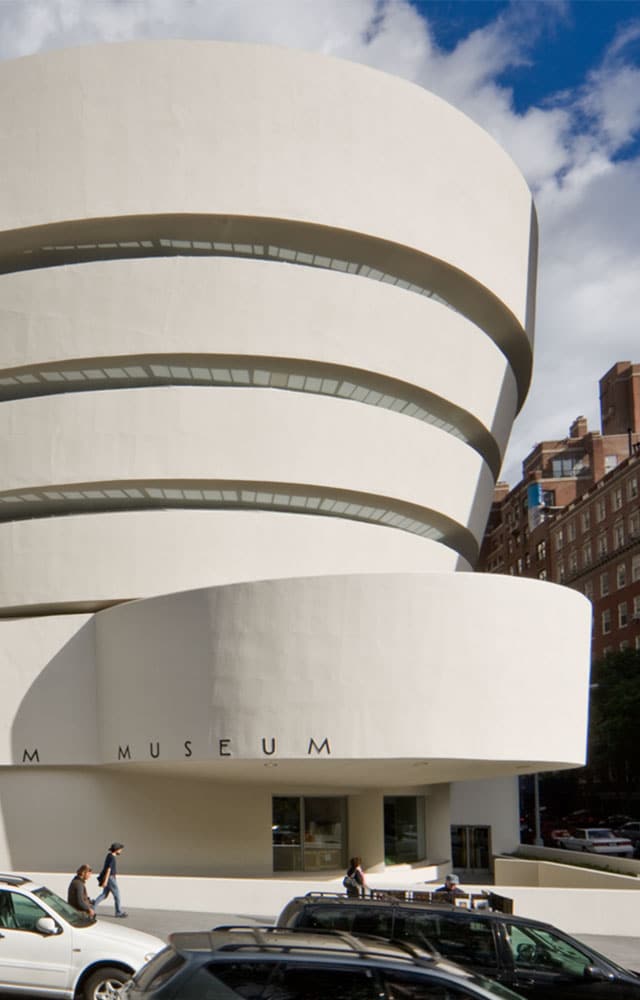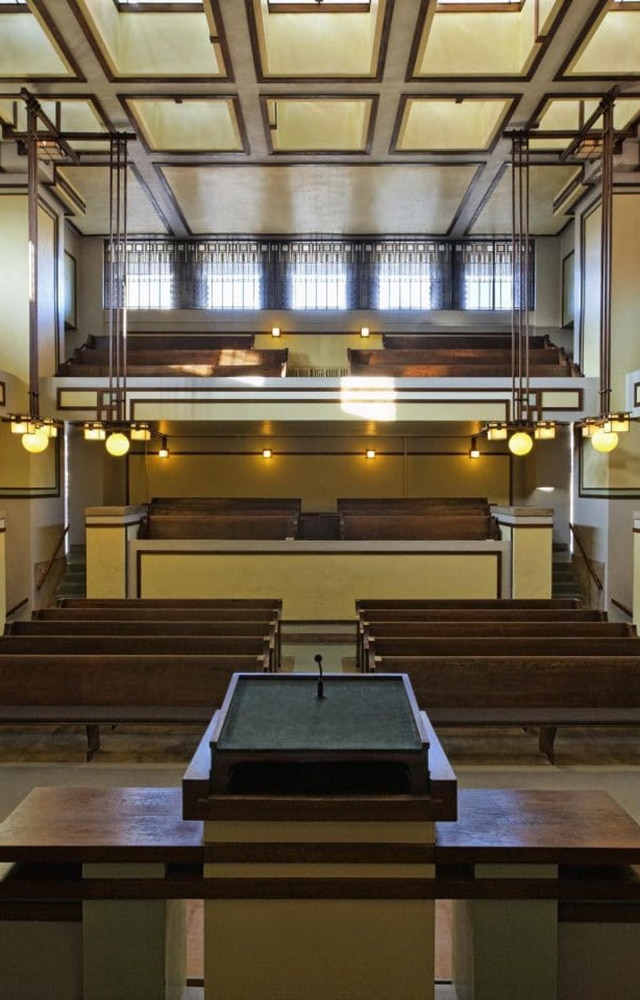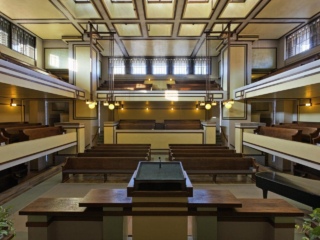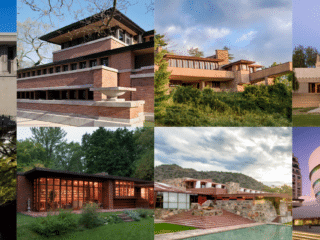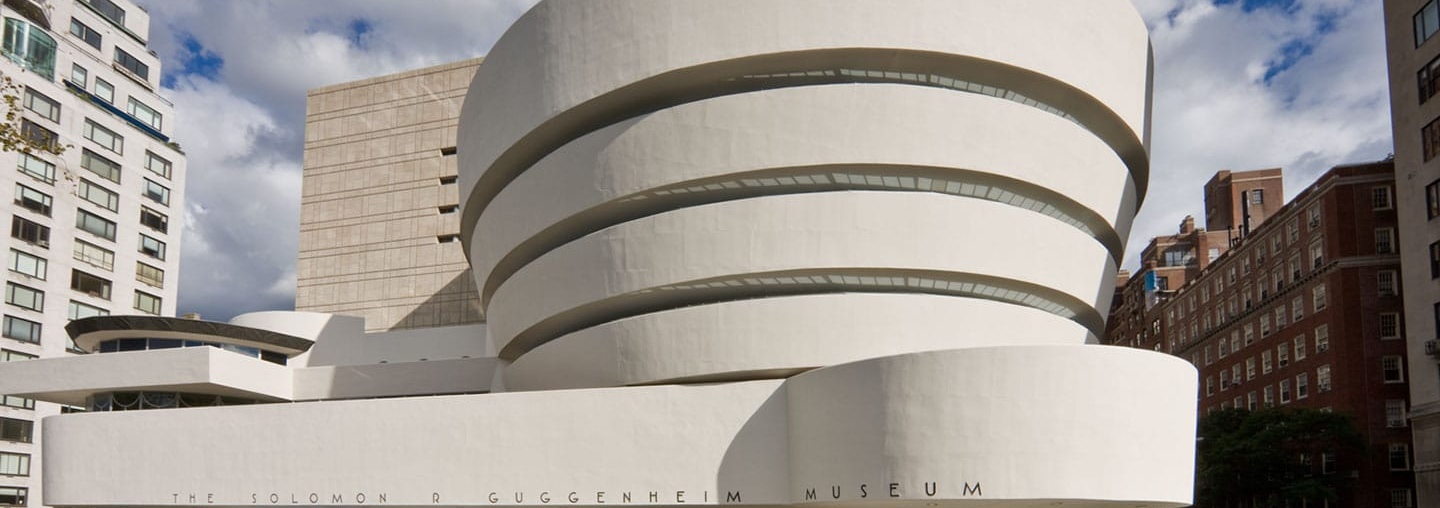
Eight Buildings Designed by Frank Lloyd Wright Nominated to the UNESCO World Heritage List
Frank Lloyd Wright Building Conservancy | Dec 20, 2018
The United States previously submitted a collection of Wright buildings to the World Heritage List in 2015; the revised nomination will be considered by the World Heritage Committee in July 2019.
The Frank Lloyd Wright Building Conservancy, a private nonprofit organization based in Chicago, Illinois, has coordinated the nomination to the World Heritage List of a group of eight major works by Frank Lloyd Wright, widely considered to be the greatest American architect of the 20th century.
The 20th-Century Architecture of Frank Lloyd Wright, spanning 50 years of Wright’s career, includes Unity Temple (constructed 1906-1909, Oak Park, Illinois), the Frederick C. Robie House (constructed 1910, Chicago, Illinois), Taliesin (constructed 1911-1959, Spring Green, Wisconsin), Hollyhock House (constructed 1918-1921, Los Angeles, California), Fallingwater (constructed 1936-1939, Mill Run, Pennsylvania), the Herbert and Katherine Jacobs House (constructed 1936-1937, Madison, Wisconsin), Taliesin West (begun 1938, Scottsdale, Arizona) and the Solomon R. Guggenheim Museum (constructed 1956-1959, New York, New York).
The collection of Wright buildings represents the first modern architecture nomination from the United States to the World Heritage List.
The National Park Service submitted the nomination to the World Heritage Centre in Paris on November 20, 2018, and it will be reviewed at the 2019 session of the World Heritage Committee, scheduled to be held in early July in Baku, Azerbaijan.
The document, which was originally reviewed by the World Heritage Committee in 2016, has been revised in accordance with the Committee’s request at that time for changes.
The owners of all the properties are participating voluntarily. Nominations are submitted by the U.S. Department of the Interior to the World Heritage Committee, an independent body that operates under the umbrella of the United Nations Educational, Scientific, and Cultural Organization (UNESCO). The nomination was prepared under the guidance of the National Park Service’s Office of International Affairs.
As the only organization with the mission to facilitate the preservation and maintenance of the remaining structures designed by Frank Lloyd Wright, this nomination is one of the most important shared endeavors the organization has undertaken.
History of the Nomination
The United States nominated a series of 10 Frank Lloyd Wright sites in 2015 to the World Heritage List. At its meeting in Istanbul, Turkey, in July 2016, the World Heritage Committee (WHC) decided to “refer” the nomination. A referral provides the nominee an opportunity to respond to comments by the WHC and resubmit the nomination. There was strong general sentiment among the Committee members that the architecture of Frank Lloyd Wright is globally important and should be recognized for its “outstanding universal value.”
The Frank Lloyd Wright Building Conservancy worked with the council of sites and leading scholars over the last two years to revise the nomination and rework the justification for inscription. Based on advice from the International Council of Monuments and Sites (ICOMOS), which is the official advisor to the WHC for cultural properties, the group made the difficult decision to remove Price Tower (constructed 1953-1956, Bartlesville, Oklahoma) and Marin County Civic Center (constructed 1960-1969, San Rafael, California) from the nomination, dropping the list to eight Wright-designed buildings.
“Serial” nominations involving discontiguous properties by a single architect are highly complex and requiring further refinements to the nomination is not uncommon. In 2016, 3 the WHC inscribed 17 works by Le Corbusier to the List after the nomination was reworked multiple times.
The Frank Lloyd Wright nomination has been in development for more than a decade, entailing the cooperation of the parties whose sites comprise the nomination, independent scholars and a substantial financial commitment realized through subsidies and donations, as well as countless hours donated by staff and volunteers.
What is the justification for inscription?
The 20th-Century Architecture of Frank Lloyd Wright entails eight properties that have figured prominently in shaping the course of architecture. This series played a definitive role in the development and evolution of Modern architecture during the first half of the 20th century and continuing to the present. The Outstanding Universal Value of the series is manifested in three attributes.
First, it is an architecture responsive to functional and emotional needs, achieved through geometric abstraction and spatial manipulation. Spatial continuity is expressed through the open plan and blurred transitions between interior and exterior spaces; dynamic forms used innovative structural methods and inventive uses of new materials and technologies; and the buildings have a richness of experience created through contrast and carefully composted paths of movement.
Second, the design of the buildings in this series is fundamentally rooted in nature’s forms and principles. All the buildings have an integral relationship with nature, expressed either literally in response to natural settings, or symbolically. They show a unity of design, in the way the parts relate to the whole, and the intrinsic qualities of materials are clearly expressed.
Third, the series represents an architecture conceived to be responsive to the evolving American experience, but which is universal in its appeal. This work vigorously embraces the new, addressing changing modes of living in the 20th century and promoting the value of the individualized expression. In transforming inspirations from other places and cultures, Wright created an original American architecture.
What is the timeline for the nomination?
The nomination will now be reviewed by ICOMOS, a private organization that is an official advisor to the World Heritage Committee. In May 2019, ICOMOS will make a recommendation as to whether the nomination should be listed, for the consideration of the World Heritage Committee, which meets in July 2019 and will make a decision on the nomination at that time. The Committee is made up of a rotating group of 21 countries elected from among the member countries of the World Heritage Convention.
What is the World Heritage Convention?
United States proposed the World Heritage Convention to the international community and was the first nation to ratify it, in 1972. The Convention, the most widely accepted international conservation treaty in human history, seeks to promote international cooperation to protect both cultural and natural sites that are of value to all of humanity.
What are the effects of nomination?
World Heritage listing is primarily honorary, though it also can often stimulate increased tourism. The Wright sites would be one of only 24 World Heritage sites in the U.S., and the only listing of modern architecture in this country. A list of U.S. World Heritage sites is available on the National Park Service website.
Listing does not impose any new regulations or restrictions on properties. The nomination documents the existing legal protections for the property. The nomination also identifies a “buffer zone” that protects the setting of the property through existing land-use laws, but which is outside the formally nominated property boundary.



